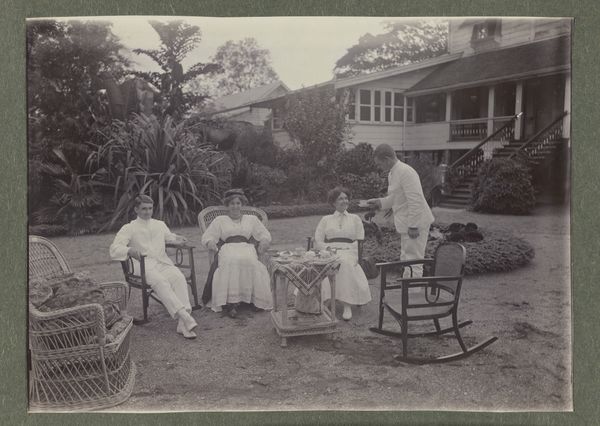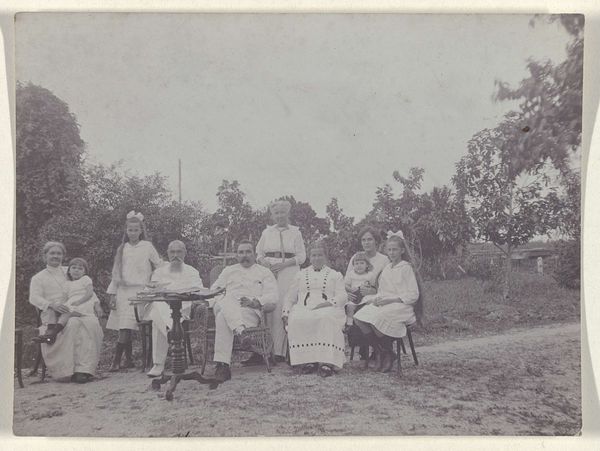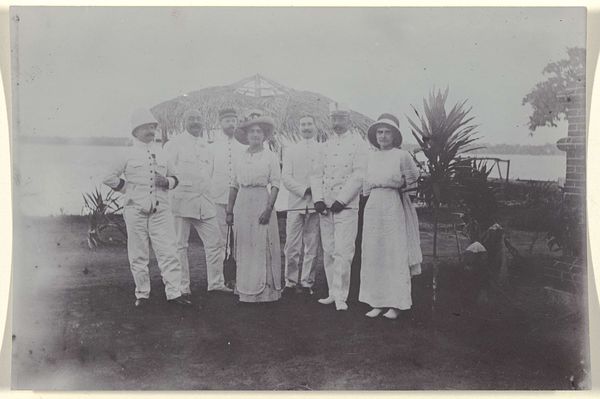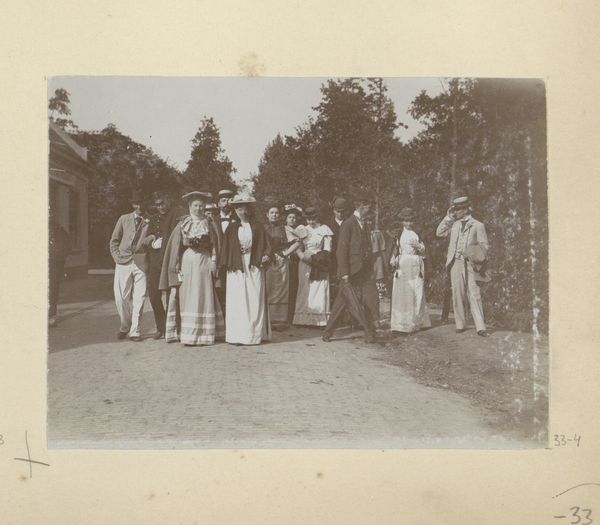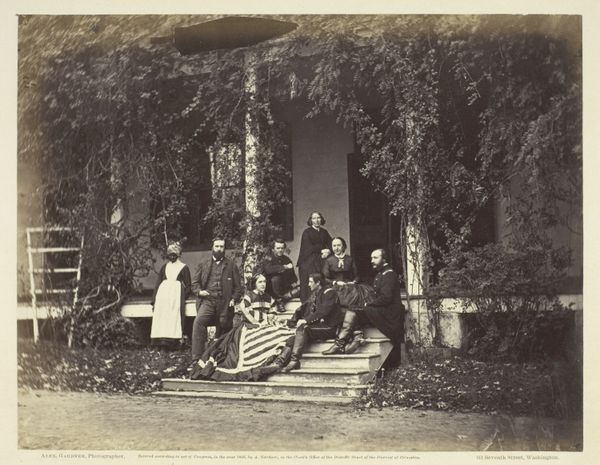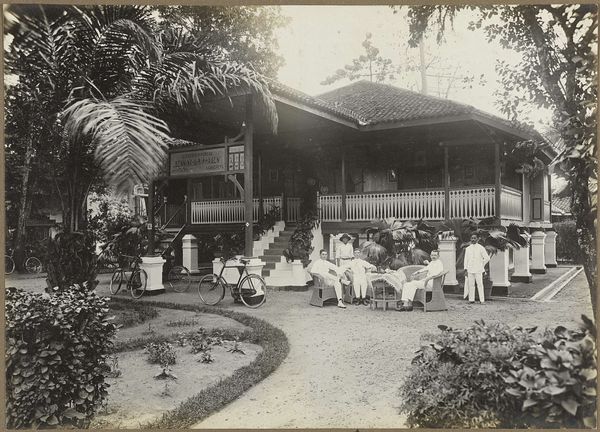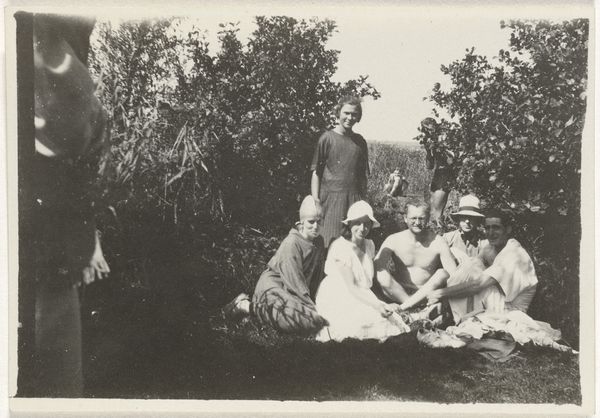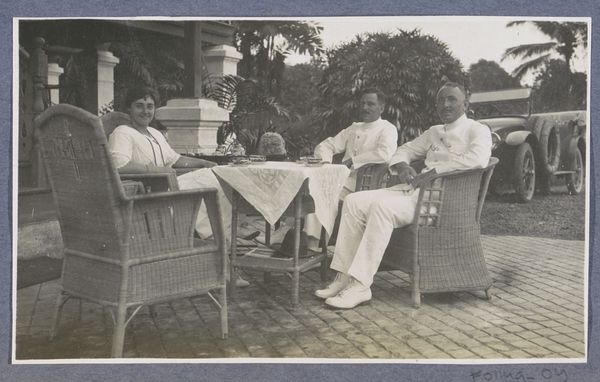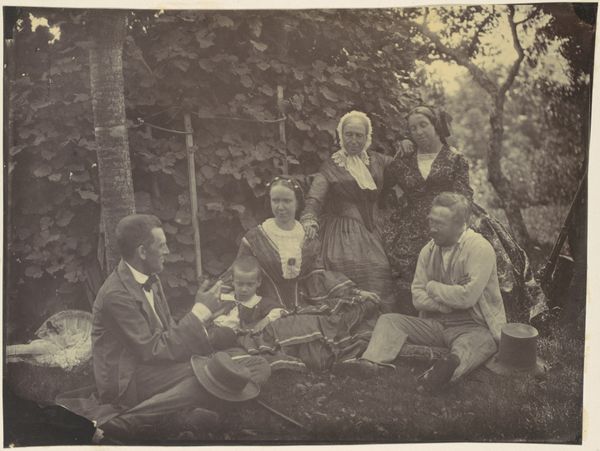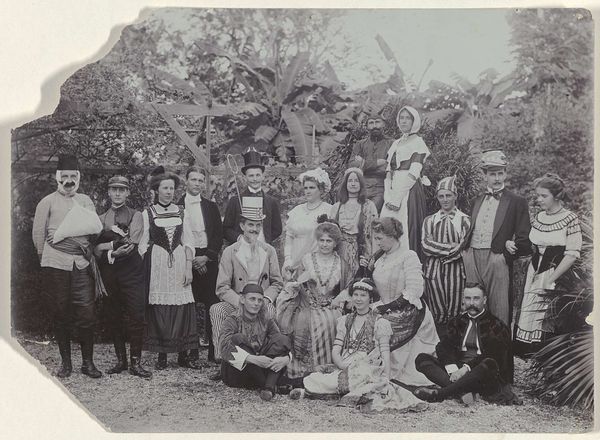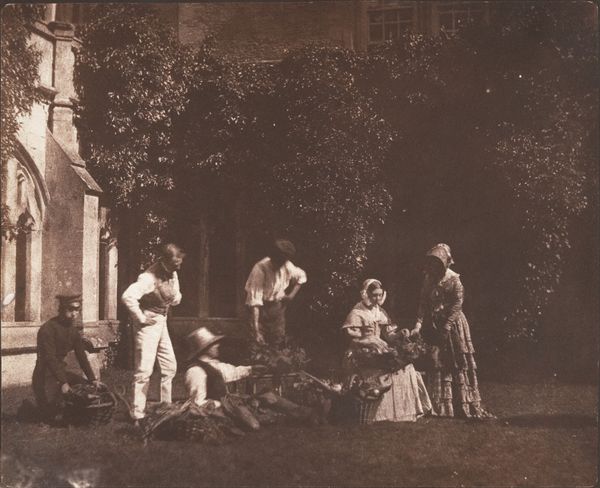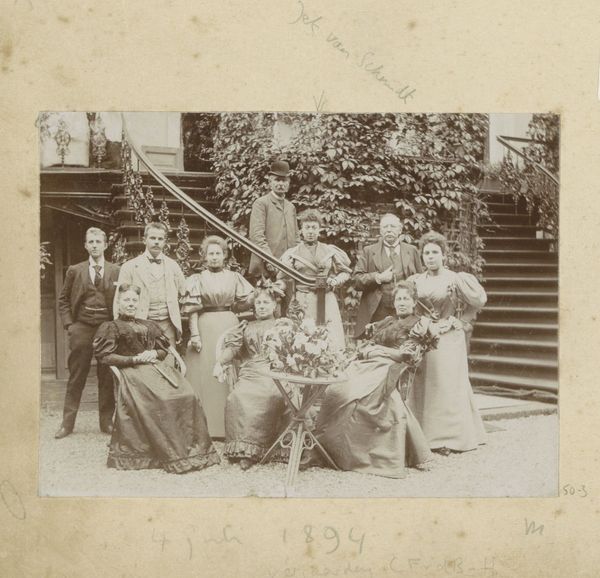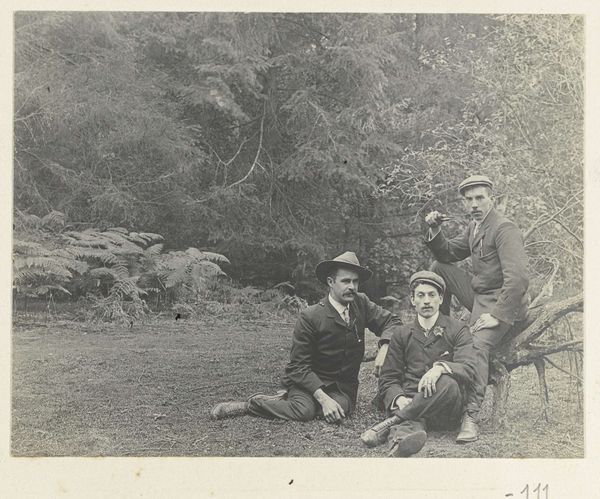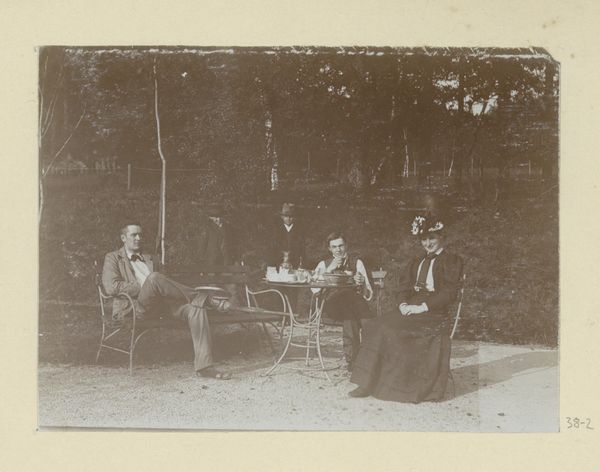
wedding photograph
black and white photography
photo restoration
black and white format
archive photography
historical photography
black and white theme
couple photography
black and white
monochrome photography
Dimensions: height 113 mm, width 141 mm
Copyright: Rijks Museum: Open Domain
Curator: This intriguing image is entitled "Gezelschap in tuin," dating from around 1911 to 1912, and resides here at the Rijksmuseum. It comes to us from an anonymous hand. Editor: It's striking how the monochromatic tones lend an air of wistful reflection. There's something so staged and yet spontaneous about the subjects and their pose. Curator: The composition, even in its static nature, reveals a careful arrangement. Notice how the figures are positioned—a visual rectangle formed with chairs in the tropical garden creating geometric space. Editor: Absolutely, I see it too. Those chairs though – all the wicker work, each uniquely ornamented. It feels as if they hold each person's status, almost regal even amongst the wildness in the tropical backdrop. What statements are they silently echoing? Curator: The dark hues of their clothes against the whites suggests both solemnity and maybe the beginning of modern leisure; semiotics for how far we have come now from ritual into performance and social performance. Editor: The teacup table, positioned with symbolic deliberation and open book beside it, invites us into a narrative where education, prosperity, and cultivated life blend to craft a specific persona – the cultivated mind as colonial actor? Curator: The light direction, casting deep shadows beneath them, anchors them in this artificial yet sun-drenched space. The tones and placement reveal as much, creating an image to ponder. Editor: It reminds me how much the language of photography borrows from painted portraiture and how those languages still resonate in social interactions – performance with deep psychological and social significance beyond aesthetics. Curator: Indeed. Its very static quality compels a re-examination, where personal histories intertwine with formal visual syntax. Editor: I am left now considering this photographic memory—a tangible symbol bridging epochs—it leaves me with so much more food for thought.
Comments
No comments
Be the first to comment and join the conversation on the ultimate creative platform.
